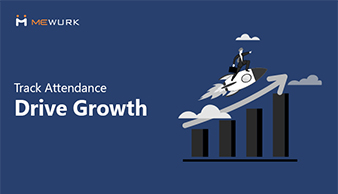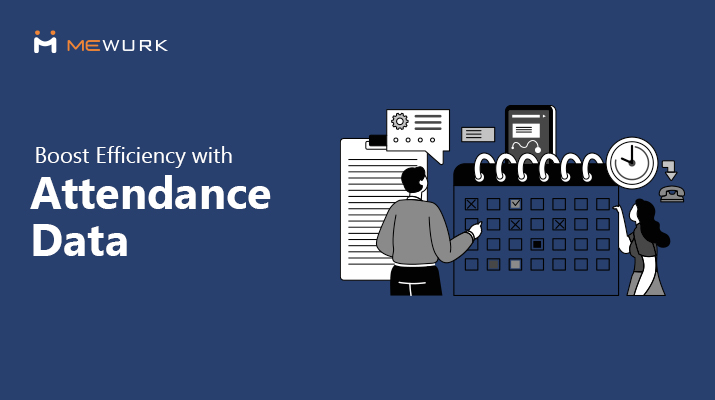
Payroll Software Price in 2025 - What You Need to Know
If you are considering payroll software for small businesses in 2025, don’t limit your search to just the flashiest features. The cost matters just as much. The ever-growing and often confusing payroll software list can make one wonder if there’s truly a cost-effective option that ticks all the boxes. So, before you decide, it’s essential to understand the pricing landscape and know exactly what you’re being charged for.
Our detailed guide about payroll software price in 2025 covers pricing tiers, cost comparisons, feature breakdowns, and what small businesses should be looking for.
How Much Does HR Payroll Software Cost in India?
An Indian small business with fewer than 25 employees can expect moderate payroll software costs, typically falling well within a reasonable monthly budget between ₹1,500 and ₹10,000. There could also be a variable cost per employee, usually ranging between ₹100 and ₹400 per month.
Payroll Software Pricing Models: Understanding Your Options

Flat-Rate or Subscription Plans
Many payroll tools operate on a flat-rate pricing model where you pay a fixed amount, either monthly or annually, for continued access to the platform. If you are looking for a cost-effective long-term use option, then opting for the annual billing cycle over the monthly plan would be better, as it often comes at a discount rate.
These plans are divided into different tiers based on features like employee self-service portal, leave and attendance integration and how you want the system to cater to the size of your establishment and the degree of challenges with your wage management.
Employee-Based Pricing
In this model, pricing is built on a base platform fee combined with a per-user charge. That means you will pay a fixed monthly amount plus an additional fee for each employee or contractor you manage on the system.
This type of pricing model is widely used by several leading payroll management software providers in India, like Zoho Payroll, RazorpayX Payroll, and Keka. Typically, the monthly base fee will start from ₹1,000 to ₹5,00. The additional charge per employee will be between ₹100 and ₹300.
Feature-Based or Pay-As-You-Go Billing
For startups and smaller companies in India that prefer more flexibility with payroll software price, the pay-as-you-go model is an appealing choice. Instead of committing to an entire HRIS (Human Resource Information System) suite, you simply pay for the individual payroll features you need. For instance, salary structure configuration, direct bank transfer/salary disbursement.
Tailored or Custom Pricing
Large enterprises with complex payroll requirements cannot simply rely on any off-the-shelf payroll solution. They have unique needs, for instance, multi-location compliance management (EPF, ESI, TDS, etc.), bulk employee data handling, and deep system integrations. So, for them, the best option would be to opt for customised pricing models that are tailored to their specific scale, structure, and operational demands. Leading cloud-based payroll providers like Rippling and ADP are well-known for offering flexible, quote-based pricing models.
Payroll Software Cost Comparison By Different Providers
| Service Provider | Free Trial / Plan | Starting Price | Pricing Model |
|---|---|---|---|
| Mewurk | 1 year free | Custom | Pay-as-you-go |
| Zoho | 14-day trial; free ≤10 employees | ₹1,000–₹3,000/mo | Tiered |
| Razorpay | Not specified | ₹21/employee | Per-employee |
| HROne | 15-days free trial | ₹2,900/month for 25 users + ₹75/extra user | Monthly |
| GreytHR | 7-day trial | ₹3,495/mo + ₹35/extra emp | Base + per-employee |
| Pocket HRMS | Free trial | ₹60–₹90/employee/mo | Quarterly billing |
| Kredily | Available | ₹1,499 + ₹40–₹50/extra emp | Base + per-user |
Factors That Influence Payroll Software Pricing in 2025
The cost of payroll solutions, including those exclusively designed offering payroll software for the small business category, depends on several factors. Let’s understand what these cost-driving factors are.
Number of employees and contractors
Payroll software cost often scales with headcount. Service providers follow a per-employee/per-contractor per-month basis of charging style. More users mean higher costs, especially with added admin or compliance features.
Level of automation
Another important cost-determining factor in payroll software pricing is the level of automation it offers. While features like automated payslip generation, auto salary calculations, statutory compliance updates, and automatic tax filing take repetitive tasks off the plate, they tend to increase the cost.
Compliance needs
In a country like India, where each state has unique statutory compliance requirements for employee compensation, you will need payroll tools that can adapt to region-specific laws. For instance, regulations around Provident Fund (PF), Employee State Insurance (ESI), Professional Tax (PT), and TDS vary from state to state and need precise handling.
The more comprehensive and granular the compliance coverage, the greater the complexity in software development, which often translates to a higher subscription cost or setup fee for the end user.
Add-on modules like attendance, shift, or expense management
Core payroll is standard, which is often the case with free HR payroll software India. These tools basic salary process when you provide the exact data, like attendance and leave, manually. The level of automation is equal to manual systems.
Integrated payroll systems communicate with workforce modules like biometric attendance tracking to determine payroll processing cycles, shift scheduling for accurate wage calculations, and expense claims for reimbursement processing. However, these systems are on the higher end of the pricing spectrum.
Support level

Cloud vs On-Premise deployment
When it comes to how payroll software works with regard to its pricing, it usually follows two main models. Subscription-based (cloud) and one-time licensing (on-premise).
Cloud-based payroll software works on a monthly or annual fee structure. The fee is determined by the number of features, employees, or payroll processing usage, such as the frequency of salary runs, compliance filings, and integrations. This model has lower upfront costs, regular updates, and easy access from anywhere.
On the other hand, on-premise payroll software demands a higher initial investment for licensing, installation, and IT infrastructure.
Wrapping up
Payroll software decisions in 2025 hinge on what you want to invest in. Functionality, growth potential, and service quality. We trust this guide cleared up the payroll software price puzzle for you. Did we overlook something? Drop us a note with your questions or ideas.
Looking for a budget-friendly payroll software with maximum features and automation capabilities? Mewurk might be just what you need. It's a cloud-based HR and payroll suite exclusively designed for SMEs and available for a free trial for up to six months. Leave us a message for more details!
Frequently Asked Questions
Can I integrate the payroll software with my existing HRMS or ERP systems?
Yes. It is easy to use the Mewurk payroll solution with your existing HRMS or ERP systems. Also, it is worth noting that our system is natively integrated within our broader HRMS suite. It means without relying on third-party connectors or external APIs, you can integrate basic HR modules like attendance, leave for a unified data flow.
What additional charges should I consider when evaluating payroll software cost?
Common additional charges to payroll management software include setup or onboarding fees, charges for advanced compliance features, additional user access, integrations, report customisations, or premium support upgrades.
Is it possible to run multi-country payroll with your payroll software?
Yes, Mewurk has been designed with multi-country payroll requirements in mind.
How often should I reassess my payroll management software subscription?
It’s good practice to review your payroll solution subscription annually or whenever there has been a change in business size, compliance regulations, or workforce structure. The reassessment will help you avoid overpaying.
Most Popular Post

Why Accurate Attendance and Leave Management Matters for Business Growth?
Read More →Why Accurate Attendance and Leave Management Matters for Business Growth?
How To Leverage Attendance Data For Better Workforce Management?
Read More →How To Leverage Attendance Data For Better Workforce Management?




